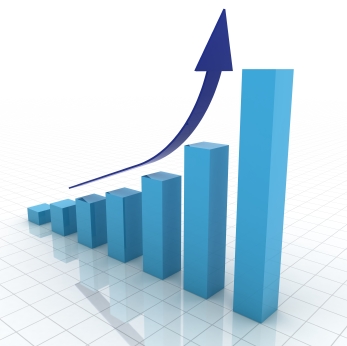 Social media return on investment (ROI) is simply a measurement of efficiency. It's a lot of things to a lot of people: “return on inactivity,” “return on innovation” and “return on engagement.”
Social media return on investment (ROI) is simply a measurement of efficiency. It's a lot of things to a lot of people: “return on inactivity,” “return on innovation” and “return on engagement.”
However, in a stricter sense, social media ROI is defined as a measure of the efficiency of a social media marketing campaign. This definition might sound complicated, but in reality, it's quite simple.
What Does ROI Really Mean?
Let's backtrack a bit.
We've all heard what “ROI” stands for, but what's less understood is the actual meaning and the importance of ROI.
In the financial world, ROI is used to measure the financial efficiency of an investment. ROI is based on the financial formula:
ROI = (return – investment) / investment %.

This means that if you increase your return while keeping your investment the same, then you increase your ROI. This is good. If you decrease your return while keeping your investment the same, then the ROI goes down. That's bad. A high ROI is better than a low ROI.
Because the ROI formula uses only two inputs – the return and the investment – the ROI formula is an easy way to measure and compare marketing campaigns. A marketing campaign with a high ROI is considered better and more efficient than a marketing campaign with a lower ROI.
It's important to understand that ROI measures the efficiency of an investment because then you also understand that ROI cannot be defined using alternative definitions. “Return on inactivity” does not help you measure the efficiency of your campaign.
Social Media ROI Uses The Return And The Investment
Now, all we need is to take our social media return (the amount of value that we got from our social media campaign) and our social media investment (the amount of money that we invested in our social media campaign) and run it through the financial ROI formula.
Social media ROI = (SM return – SM investment) / SM investment %.
Simple, right? Not so fast. The social media investment is clearly defined, but how do you define the social media return and how do you attach a dollar value to the return? We need to answer both questions before we can calculate the social media ROI.
Social Media Return Is The Return On Your Social Media Goals
The peculiar feature of the social media return is that you can define it to be essentially anything you want it to be!
Brian Solis from the Altimeter Group puts it even more succinctly in his article ROI Doesn't Stand for Return on Ignorance: “Everything starts with an end in mind.”
Get World-Class Marketing Training — All Year Long!
Are you facing doubt, uncertainty, or overwhelm? The Social Media Marketing Society can help.
Each month, you’ll receive training from trusted marketing experts, covering everything from AI to organic social marketing. When you join, you’ll also get immediate access to:
- A library of 100+ marketing trainings
- A community of like-minded marketers
- Monthly online community meetups
- Relevant news and trends updates

Discover Proven Marketing Strategies and Tips
Want to go even deeper with your marketing? Check out the Social Media Marketing Podcast! Publishing weekly since 2012, the Social Media Marketing Podcast helps you navigate the constantly changing marketing jungle, with expert interviews from marketing pros.
But don’t let the name fool you. This show is about a lot more than just social media marketing. With over 600 episodes and millions of downloads each year, this show has been a trusted source for marketers for well over a decade.
In reality, social media return is the value that you derive from your social media campaign. For instance, if the goal of your social media campaign is to drive sales, then your social media return is the number of sales that you can attribute to your social media campaign.
Instead of sales, say your goal is to drive consumer insights. In this case, your social media return is the quantity and quality of the consumer insights you get from your fans and followers.
A third example of social media return is brand awareness. If your goal is to drive awareness of your brand, then your social media return is brand awareness.
I could give many more examples, but the point is that social media return is the value that you derive from social media based on the goals of your campaign. (Note that the number of followers, fans, Likes and comments are not social media campaign goals.)
Quantifying Social Media Return
After we have defined our social media return, we need to quantify the social media return into dollars and cents. This is difficult because you need to look at each type of social media return and develop a method for dollar quantification.
For instance, looking strictly at sales, we can quantify the social media return by looking at “last touch” sales, or we can use sales forecasting techniques or use unique identifiers such as coupon codes.
Quantifying consumer insights is harder and requires different techniques to estimate value.

One commonly used technique is to compare the quantity and quality of consumer insights from offline focus groups to consumer insights from your social media campaign.
The idea is that you know the value of consumer insights from offline focus groups based on their cost. By comparing the quantity and quality of consumer insights from both channels, you arrive at a reasonable estimate of the value of consumer insights from your social media campaign.
Brand awareness requires yet another method. In April 2010, social media analytics company Vitrue made quite a stir when they stated that according to their research, the average Facebook fan is estimated to be worth $3.60. Vitrue looked at the average number of messages each fan received and then compared this number to what it would cost to purchase impressions to send the same number of messages to each fan.
Use Social Media ROI To Compare Apples To Apples
After estimating your return and your investment, you use the ROI formula to calculate your social media ROI.
Remember, ROI is a measurement of efficiency, so having calculated the ROI of your social media campaign, you use the ROI number to compare to other social media campaigns and also your TV, print, radio and other campaigns.
ROI is possibly the most powerful tool in your marketing toolbox. This sentiment is demonstrated in Amy Porterfield's post, Study Reveals Top 6 Social Media Goals for 2011, where she correctly points out that according to the Altimeter Group, 48.3% of all corporate social strategists will have social media ROI as their highest focus in 2011.
ROI is a very powerful weapon in your marketing arsenal.
What do you think? What methods do you use to measure social media ROI? Leave your comments in the box below.
All photos from iStockPhoto.
Attention Agency Owners, Brand Marketers, and Consultants

Introducing the Marketing Agency Show–our newest podcast designed to explore the struggles of agency marketers.
Join show host and agency owner, Brooke Sellas, as she interviews agency marketers and digs deep into their biggest challenges. Explore topics like navigating rough economic times, leveraging AI, service diversification, client acquisition, and much more.
Just pull up your favorite podcast app, search for Marketing Agency Show and start listening. Or click the button below for more information.

